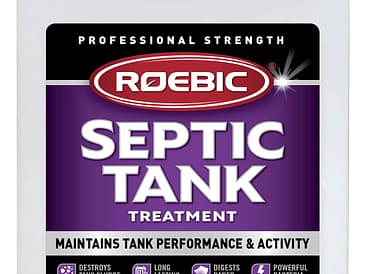If you’re considering installing a new septic system for your house, you may wonder how much it will cost. Many factors are involved, such as the materials used in the tank and the labor involved. The size of your house also impacts the cost.
Cost of installing a septic system
Septic systems are an ideal way to clean up wastewater from a home. They are usually used for properties that are not connected to a municipal sewer system. These systems consist of a concrete septic tank that separates wastewater into oil and grease at the bottom and solids on the top. Most tanks are designed to hold at least 1,000 gallons of water. The size and type of tank required will depend on the size of the property. Replacing an existing tank can be cheaper than installing a new system. However, excavating, removing soil and hardcore, and obtaining permits may be required.
A septic tank for a mobile home can cost between $3,150 and $5,000. The type of system you choose will depend on the local building codes and your home type. The cheapest type of system is a gravity-based system. Installing a pump alarm in the septic tank will notify you when there is a problem with the system.

Before installing a septic system, you must perform soil testing. This includes a deep-hole test and a perk test. The results will help determine the best location for the system. For example, a system designed for areas where gravel is the primary source of soil is more appropriate than one in areas with clay. Trucking in gravel is an additional cost. Lastly, it would be best if you considered the price of a pump. This equipment can add $1,000 to $2000 to the cost of your septic system.
When installing a septic tank, you should obtain a permit from the local authorities. Permit fees vary by state, but a residential license costs between $300 and $500 on average. For commercial properties, the price will be up to three times higher.
Materials used in septic tanks
Septic tanks are made of several different materials. The first is concrete, followed by high-density polyethylene (HDPE). Concrete tanks are much heavier than HDPE tanks, which are often made of lightweight plastic. Plastic septic tanks are also easier to install and less expensive than concrete tanks. They are also less likely to shift and crack in certain conditions.
Septic tanks must be kept free from solid waste before they are discharged. Otherwise, they will pollute the leach field and cause backups. Therefore, septic tanks need to be inspected regularly. Ideally, they should be pumped every three to five years, though some systems may require more frequent pumping.
Septic tanks can be made from steel, but this material tends to rust after a few years, making them unsuitable for many areas of the country. Concrete tanks can last for 40 years or more. They are also more resistant to rust and durable against buoyant pressures generated by rising water tables.
Labor costs vary significantly from area to area, but they are often lower in rural areas than in urban areas. However, city-based labor costs may include additional service charges. Septic tanks can be made from various materials, including concrete, fiberglass, steel, and plastic. Choosing a suitable material is essential because it can affect the longevity of your system.
The most common materials in septic tanks are steel, concrete, and fiberglass. Steel tanks last about 25 years but will begin to rust over time. The roof of a steel tank can also rust and become unusable. As a result, steel septic tanks should be inspected for corrosion. As with all septic tanks, animal intrusion can also weaken steel tanks. However, if appropriately examined, steel tanks can be repaired or replaced.
Labor costs
Labor costs for new septic systems vary from location to location and can be as much as 50 percent of the total cost. These costs are usually higher than those for purchasing a new tank alone. The installation portion of the job is also expensive but may be worth the price if you don’t have the time or the skill set to install the system yourself. To find out how much labor will cost for your project, check with a plumber or contractor.
Once you’ve decided on the design of your new septic system, your next step is determining the size of the tank. This will depend on how much waste you produce, the number of occupants, and the number of water sources in your home. The installer must also excavate around the tank to ensure it’s positioned correctly.
Another component of a septic system is the distribution box. This part is the connector between your tank and the drain field. If it is damaged, the entire system will fail. Concrete boxes may cost anywhere from $600 to $650, and plastic ones cost around $50. A drain field that needs further treatment can cost up to $5,000.
In addition to replacing the tank, you should consider replacing the baffle. The baffle prevents the accumulation of scum in your septic tank and should be replaced every five years. Replacement of a baffle can cost between $300 and $500. A pump, which is necessary to push sewage from the tank to the drain field, is also a significant component.
While installing a new septic system can be expensive, it is much more affordable than repairs and replacements. Regular maintenance can reduce problems and extend the life of the system. Performing periodic maintenance checks is highly recommended for any homeowner.
House size
Several factors can affect the price of a new septic system, including the size of your home. The size of the tank you need is dependent on the amount of waste that your home produces. Larger tanks cost more than small ones and require more frequent pumping to keep up with the waste. For this reason, choosing the right size is critical.
A new system can cost between $3,000 and $15,000 to install. The cost can vary widely depending on the size of your house and the location of the leach field. The price includes installing the drain or leach field, filtration materials, and vitrified clay pipe. You may also need to pay for building permits, which can run anywhere from $250 to $450. You can apply for the permit yourself or hire a local contractor to do the job. The process can take one to two weeks.
Before deciding, you should get estimates from at least three septic system installers. From their estimates, you should be able to determine the cost and size of your system. While new septic systems tend to be more efficient and environmentally friendly than conventional systems, you should also be aware of the cost of maintaining them. If you choose a commercial-grade fiberglass tank, you should expect the system to last decades.
Before you even begin looking for a house, consider the size and cost of a septic tank. While it may seem daunting, it will show the potential buyer you are serious about the project. If you have enough money, a new septic system should be affordable.
Waste breakdown system
The cost of new septic systems varies greatly. The cost of an aerobic system is around $10,000 to $20,000, and the cost of an anaerobic system is about $2,000 to $5,000. Anaerobic systems are less effective at breaking down waste and require a larger drain field than aerobic systems. However, they cost less than an aerobic system and require less land.
An engineered septic system is a more advanced option that costs around $12,000 to $15,000 for a new system. It works by pumping liquid waste into a specially engineered drain field. This system can be installed next to a sand-filled box or with a new drain field mound.
A septic system consists of a series of chambers connected by pipes. The soil in the chambers helps treat wastewater, which travels into these chambers and is filtered by microbes. This process allows sewage to be safely disposed of.
The cost of a septic system depends on the size of your home. A small residential system is typically less expensive than a large industrial one. An average home needs a septic tank of around 1,000 gallons of water. The size of the tank will depend on how many people live in your home and how many water sources your property has. Adding a new tank, however, requires excavation and hardcore removal. It also requires permits.
The cost of a new septic system can be significantly higher if the existing drain field is not in good condition. The cost of a new system can range anywhere from $10,000 to $20,000.




